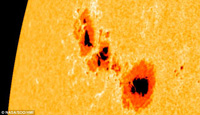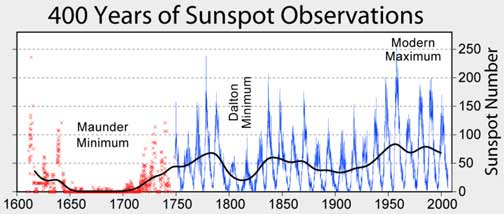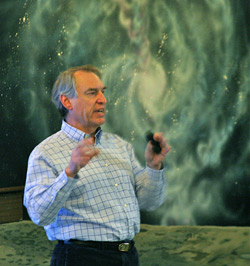February 29, 2012

On February 9, 2012, Norwegian scientists posted new research
demonstrating a strong correlation between the duration of our Sun’s
sunspot cycle and subsequent temperature changes in Northern Europe.
They claim that,
over the past 150 years, changes in our Sun count for half of Europe’s
temperature rise and two-thirds of the temperature rise closer to the
North Pole. Based on long-term trends in sunspot cycles, they forecast
decreasing global temperatures over the next 75 years.
If this research
is confirmed, it could substantially impact the strident public debate
on global warming. Society might have much more time to develop better
and less expensive alternative energy sources. For example: proposals
published in Scientific America advocated replacing all the world’s
coal and gas usage with wind and solar energy, estimating this would
cost $100 trillion and require solar collectors covering an area the
size of California. If the new research is correct, we may find better
ways to invest our limited resources.
This new study
identifies a strong statistical correlation between temperatures on
Earth and sunspot activity. It is important to recognize that
correlations, no matter how strong, do not prove cause-and-effect.
Others have identified correlations between global temperatures and
greenhouse gases, which also do not definitively prove
cause-and-effect. Correlations alone do not have the scientific
certainty of controlled, reproducible experiments that are the
hallmarks of other scientific disciplines. Controlled experiments are
impossible in climatology, so the best we can do is make judgments
based on less definitive evidence.
The influence of
our Sun on Earth’s climate has been a topic of scientific interest for
200 years. Our Sun’s magnetic field changes periodically, with its
north and south magnetic poles reversing roughly every 11 years,
resulting in periods of high magnetic activity alternating with periods
of low magnetic activity. During periods of high magnetic activity, our
Sun emits more light, especially ultraviolet light, and the number of
sunspots also increases. Some solar cycles have been as short as 9
years and others as long as 14 years; 11 years is only a rough average.
And, as seen below, for nearly 100 years, sunspot activity was
extremely low during the “Maunder Minimum”, a period of unusually low
temperatures called the “Little Ice Age.” The black line in this chart
tracks the long-term trend of sunspot activity, showing substantially
higher activity in the late 20th century as compared with the prior 300
years.
As a side note,
some experts say Stradivarius made his violins from trees grown during
the Maunder Minimum, when the prolonged cold temperatures restricted
growth, resulting in unusually dense wood that produces remarkable
sound quality.

The new research shows that short
solar cycles are followed by high sunspot activity in the next solar
cycle, accompanied by higher temperatures on Earth. This is what we’ve
experienced for the last 200 years — a trend of progressively shorter
solar cycles and warmer temperatures.
However, the
latest solar cycle lasted more than 12 years, making it the longest
cycle in a century. The report states that average temperatures on the
Norwegian coast have subsequently dropped by 2 °F. These scientists
believe we are at a turning point — the start of a new trend toward
longer solar cycles and cooler temperatures.
If true, this is excellent news.
It will be interesting to see how the various political factions react.
Best Regards,
Robert
* * * * * * * * *
* * * * * * * * * * * * * * * * * * * * * * * * * * *
* * * * * * * * * * * * * * * *

Dr Robert
Piccioni,
Author of "Everyone's
Guide to Atoms, Einstein, and the Universe",
Can Life Be
Merely An Accident?"
and "A
World Without Einstein"

|